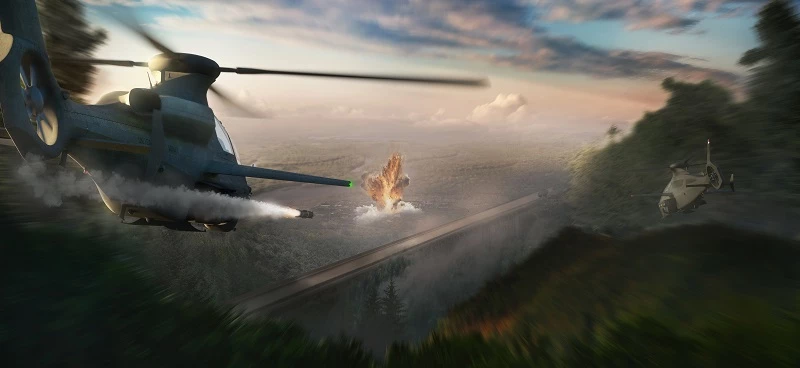Bell has taken the wraps off its new rotorcraft for the US Army, the Bell 360 Invictus. The company's entrant in the Army's Future Attack Reconnaissance Aircraft (FARA) Competitive Prototype program, the 360 Invictus is intended as a specialized attack helicopter tasked with inserting small special forces teams behind hostile lines.
The 360 Invictus is one of five competing designs from Bell, AVX Aircraft, Boeing, Karem Aircraft, and Sikorsky to replace the Army's fleet of Bell OH-58D Kiowa Warrior helicopters. To meet or exceed the competition requirements and timeline, Bell drew on its experience on the Kiowa Warrior as well as the Future Vertical Lift (FVL) project as part of the Joint Multi-Role Technology Demonstration (JMR TD) to produce a small, inexpensive streamlined airframe.
Key to this is the Invictus' fully articulated rotor system, which is derived from the Bell 525 Relentless rotor that can operate at a speed of over 200 Knots True Air Speed (KTAS) (230 mph, 370km/h) and gives the 360 Invictus a performance cruise speed of over 185 KTAS (213 mph, 343 km/h), while a lift-sharing wing takes some of the stress off the rotor to allow for high-speed maneuvering.

According to the specifications, the 360 Invictus has a combat range of 135 nm (155 mi, 250 km) with an on-station time of 90 minutes and 1,400 lb (640 kg) of payload. In addition, it can hover out of ground effect at 4,000 ft (1,200 m) in 90° F (33° C) temperatures. There is a supplemental power unit to handle high-power demands and an upgradable fly-by-wire flight control system for greater agility.
As to armaments, the 360 Invictus has a 20-mm cannon, an integrated munitions launcher, air-launched effects integration, and can ship the present US Army weapons inventory. This is backed up by an enhanced situational awareness and sensor suite.
"The Bell 360 will deliver advanced battlefield situational awareness, as well as lethal options, in support of the maneuver force at an affordable cost," says Vince Tobin, executive vice president of Military Business at Bell. "The multi-domain fight will be complex, and our team is delivering a highly capable, low-risk solution to confidently meet operational requirements with a sustainable fleet."
The US Army's FARA Competitive Prototype program is using fast-tracked development to get the successor of the Bell OH-58D Kiowa Warrior helicopters into service by 2030.
Source: Textron





